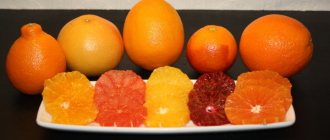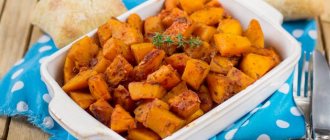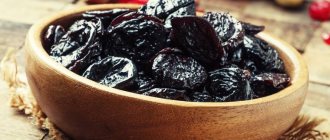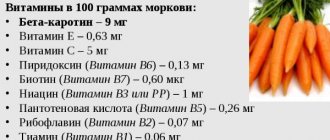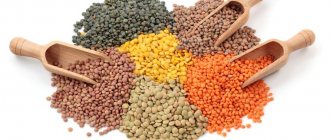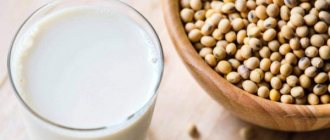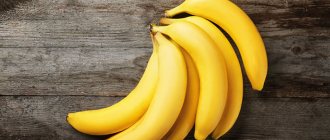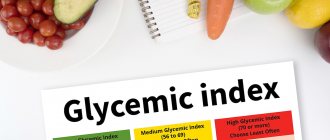Slices are an integral food product for people leading a healthy lifestyle. But, despite their benefits, they can cause harm to the human body. The wrong choice of product or its abuse has a negative impact on your figure. And all because of the rather high calorie content. To gradually give up eating flour or quickly lose weight, you need to know how to choose and eat bread correctly.
What are slices
Slices are commonly called crispy snacks made from whole sprouted cereal grains. Translated from English, the word “slice” means slice/piece.
The technology for producing a natural dietary product is somewhat similar to the production of popcorn. At the initial stage, the grains are soaked in pre-purified water and subjected to heat treatment.
Under the influence of high temperatures, they should begin to explode from the inside, after which they are pressed. The output is briquettes with a crispy, dense structure, reminiscent of rice or popped corn.
Slices are considered a new generation of bread and a replacement for the traditional baked goods that everyone is used to. They are especially popular among people who tend to rapidly gain excess weight. They do not contain flour or yeast. And, when compared with traditional bread, the amount of energy that the body spends on processing the slices exceeds the amount of calories they contain.
Thanks to modern production technology and the absence of yeast in the composition, the acidity of the bread is reduced to a minimum. And the shelf life of the product is up to 8 months from the date of manufacture.
Are slices useful?
Slices are a modern natural dietary product that is extremely beneficial for the human body and, in addition, has enhanced gastronomic qualities. Slices are produced by special processing of whole sprouted cereal grains, in which they are first exposed to high temperatures and then pressed. The result is a product that is similar in structure to puffed corn or rice, only in the form of fairly dense round flat pucks.
Today you can buy only slices made on the basis of any one type of cereal, but also multi-component ones. The former include wheat, rice, barley, oat and buckwheat slices, while the latter are represented by wheat-rice, wheat-corn, wheat-buckwheat, wheat-rye, wheat-millet, rice-buckwheat or even tri-cereals (buckwheat, rice and wheat) products.
Chemical composition and calorie content
Slices, the benefits and harms of which depend on whether they are mono- or multi-component, are made from different grain crops.
Manufacturers use as raw materials:
- corn;
- barley;
- oats;
- rice;
- buckwheat, rye or wheat.
To add variety to breads, grains are often mixed. So, on store shelves you can find slices of wheat with rice, buckwheat with corn, and so on. And the chemical composition of the product includes more than a dozen useful vitamins, microelements and amino acids.
For every 100 g of bread there is:
| Compound | Quantity |
| Carbohydrates | 65 g |
| Fats | 2.5 g |
| Squirrels | 15 g |
| Alimentary fiber | 2.5 g |
| B vitamins | 3.6 mg |
| Vitamin K | 7.8 mg |
| Vitamin PP | 4.8 mg |
| Vitamin E | 0.55 mg |
On average, healthy crunchy snacks contain 300 calories. But, again, it depends on the grain crops on which the diet breads are made. For example, corn slices contain 340 kcal, wheat slices – 330, and whole grain slices – 320 kcal.
Wheat slices - benefits and harms
Slices, dry cereal breads, are a fairly new product on the Russian market. Therefore, many do not yet know how wheat slices are useful. The essence of their manufacturing technology is extrusion, i.e. heating the grains and further exploding them. Wheat slices, a dietary product, are not only beneficial, but also harmful.
The benefits of wheat slices
Nutritionists and doctors unanimously say: slices are very useful. Many people use them as a dietary product. However, you should not assume that wheat slices are an ideal option for losing weight. This is just an element of a diet, and not a means of losing weight.
Nowadays, slices that contain several cereals at once are especially popular. Depending on the content of a particular cereal, the beneficial properties of the slices are as follows:
- With oats
. They have a good effect on the skin and genitourinary system. - With wheat
. They have a positive effect on the stomach and intestines. So, the answer to whether wheat slices are healthy is definitely positive. - With corn
. Removes waste and toxins, normalizes intestinal function. - With barley
. Usually recommended for those who want to lose extra pounds. - With rice
. Ideal for calming nerves, normalizing mood and sleep. Increases overall vitality. - From Greek
. Provides energy and promotes weight loss.
The main advantage of all slices is the absorption of harmful substances and their removal from the body. According to research, slices are the enemies of colds, dermatitis, heart attacks and strokes. This is an excellent nutrition option for athletes.
Harm of wheat slices
Slices are inexpensive and easy to produce; they can be easily found in any supermarket. The disadvantages concern breads made with the addition of wheat. They are high in calories. Lower calorie content
than that of ordinary bread, but still high: up to 400 kilocalories per 100 grams of food. Therefore, it is better to exclude such slices from the diet of people who are struggling with obesity.
Advantages and disadvantages
A significant part of the beneficial microelements contained in grains is preserved in the bread thanks to special processing. The product contains beneficial properties of thiamine, calciferol and niacin.
Calcium, vegetable fats, phosphorus have a beneficial effect on the main systems of the human body:
- Oat slices are recommended for use by people with kidney disease, a tendency to neurodermatitis and other skin diseases of a neurogenic-allergic nature.
- Wheat or barley-based breads are useful for problems with the gastrointestinal tract and are effective in combating dysbiosis.
- Crispy buckwheat snacks are suitable for people with diabetes and extra pounds. Their regular use minimizes the risk of cardiovascular diseases.
- Rice slices are useful for insomnia. They also remove heavy metals, radionuclides and toxins from the body.
Multigrain breads are useful even for absolutely healthy people. This is a valuable source of fiber, carbohydrates and other beneficial substances.
Slices, in addition to their benefits, have one drawback. Their harm lies in their high calorie content. It is strictly not recommended to abuse them or give them to children under 3 years of age. The child’s body is not yet strong enough, so it will be difficult for the stomach to digest such food with a high concentration of fiber.
Wheat slices
Wheat slices are breads made from whole sprouted wheat grains.
Initially, they are subjected to short-term treatment at high temperature (resulting in an explosion from the inside), and finally they are pressed. This product has an airy, crispy and fairly dense structure. Outwardly, it looks like pucks. Today, there are various types of slices on the market: from one grain (buckwheat, wheat, barley, oats, rice) and multigrain (from two or more types of grains) (calorizer). But the most popular are slices made from wheat.
It should be noted that they (unlike bread) are produced without the use of yeast. The result is a product with low acidity. In addition, flour contains practically no useful substances (only easily digestible carbohydrates). Also, the body requires significantly more energy to digest slices than bread. This allows you to maintain a feeling of fullness for a longer period and ensure proper bowel function. Four slices are equal to one slice of bread.
They should be stored at temperatures up to +20 degrees and humidity no more than 75 percent. The shelf life is eight months if the seal of the packaging is not broken.
Calorie content of wheat slices
The calorie content of wheat slices is 382 kcal per 100 grams of product.
Composition and beneficial properties of wheat slices
The technology for producing wheat slices allows you to preserve a significant part of the nutrients. So wheat slices are the source:
The manufacturer can additionally season the slices with salt or sweeteners and add a vitamin and mineral premix.
Thanks to this composition, wheat slices activate the intestines, perform the function of cleansing the body of toxins, prevent the accumulation of fats, normalize the functioning of the nervous system, and also normalize weight.
They carry a high glycemic load, as they contain large quantities of carbohydrates, so they should be consumed in moderation. The norm for an adult is no more than 6-8 slices per day, and for a child – 1-2. It is not recommended to offer them to children under three years of age, since their fragile stomach is not ready for such a load.
Are there any contraindications?
As such, there are no contraindications to the use of whole grain slices. People with intolerance to certain cereals should carefully study the composition when purchasing. Many grains can cause allergic reactions.
To save money, some manufacturers use flour instead of grains. This mass of yeast, salt, preservatives and synthetic food additives is shaped and dried like crackers. Nutritionists call such slices fake and do not recommend them to people who follow a diet.
Contraindications and harm
Despite a lot of positive qualities, bread can be harmful. If an adult does not feel any negative effects, then it is better not to give them to children under 4 years of age: fiber is not suitable for a child’s body. At an older age, you can give slices for breakfast with cottage cheese products or vegetables.
Important! Before consuming the bread, you should consult a doctor. In some cases, cereal may be contraindicated.
Slices made by baking can cause considerable harm . They have the same calories as white bread and not enough fiber. This means that such products will not be useful for people who are overweight or have problems with the digestive system.
When breastfeeding, experts recommend eating no more than 100 g of bread at breakfast . In this case, the child’s condition should be monitored. If the baby has a negative reaction (bloating, rash, increased gas production), the bread is discarded.
During pregnancy, it is recommended to consume only whole grain slices . In this case, the dose does not exceed 100 g per day so that carbohydrates can be absorbed and bloating and gas formation do not occur.
- There are also a number of restrictions for eating bread:
- Diabetes mellitus type 2 . You can only eat rye, buckwheat or combination products with a low glycemic index. The norm is no more than 3 pieces. per day.
- Diarrhea . Slices can only aggravate the situation, so their use is prohibited.
- Constipation . In case of such a violation, only whole grain breads without yeast and food additives are allowed.
- Colitis or cholecystitis . Slices made from whole grains are allowed. But no more than 100 g per day.
- Mild poisoning . Eating bread is allowed, but only 3 days after the symptoms disappear.
- Pancreatitis . Rye slices of no more than 100 g per day are recommended.
Although the nutritional value of the product is the same as that of bread, it is easily digestible and leaves you feeling full for a long time. Fiber interferes with the absorption of excess calories, so slices can be consumed when dieting. But it should be borne in mind that the norm should be no more than 3–5 pieces per day.
Did you know? Among the Slavic peoples, wheat was a symbol of wealth. Her crops were called “abundance,” which is where the word “abundance” came from over time.
Kinds
The energy value of crispbread depends on their composition. When switching to a healthy diet, it is better to give preference to coarse slices with a high percentage of fiber.
Corn
Corn slices differ from buckwheat or rye slices by their high calorie content (from 340 to 370 kcal).
But thanks to their regular consumption, the condition of the skin improves, as well as:
- blood pressure is normalized;
- brain function improves and metabolic processes accelerate;
- blood vessels are cleared of blood clots that form when blood clotting is activated.
Cornbread is good for pregnant women because it contains a lot of folic acid. They remove cholesterol from the body and normalize plasma sugar levels.
Wheat
Of all the crunchy whole grain snacks, wheat slices are the most popular. But only those that do not contain flavor enhancers and preservatives have a beneficial effect on the body. And the value of this type of product lies in the coarseness of the grain grinding.
Potassium and magnesium contained in wheat slices help improve the functioning of the gastrointestinal tract. They have a specific taste, so we can introduce them gradually into the diet.
Rye
Rye is a storehouse of vitamins and minerals. To produce perfect slices of this type, rye flour is mixed with buckwheat. Due to their low calorie content, they are useful for anyone who wants to lose excess weight. During fasting days, it is best to snack on snacks made from rye and bran.
Buckwheat
Slices, the benefits and harmful properties of which have been studied by nutritionists, contain healthy carbohydrates. They saturate the body quickly and for a long period of time. They also increase glucose levels, accelerate metabolism and improve digestion.
Buckwheat flour-based breads make delicious dietary snacks.
Rice
The hypoallergenic nature of puffed brown rice slices has allowed them to earn special love among fans of healthy eating. When extruding and pressing raw materials, all useful substances remain intact. They are stored and found in the top layer of the grain.
The main feature of rice slices is their effectiveness in inflammatory processes. Cholesterol is absorbed and excreted from the body by rice components.
Experts advise people who lead a sedentary lifestyle and those diagnosed with diabetes to avoid eating rice flour snacks. The fact is that such breads have a high indicator of the influence of carbohydrates on changes in blood glucose levels.
Slices with two or more grains
Today, manufacturers offer crispy snacks from both one grain crop and several mixed ones.
The main ingredient is wheat, which is combined with:
- rice;
- barley;
- buckwheat;
- oats;
- corn.
Allergen-free bread is produced for people with gluten intolerance. You can buy them in special departments of stores, but at a considerable cost.
What are the best foods to eat when losing weight?
In the fight against extra pounds, it is better to give preference to slices made from buckwheat and flaxseeds. In general, crispy snacks made from any grains are suitable, but their calorie content should not exceed 300 kcal per 100 g of product. The leading brands in the ranking of the best breads for weight loss are Finn Crisp, Dr. Korner and “Healthy”.
When losing weight, you don’t need to place high hopes on snacks alone. If you completely replace flour products with them, but do not reduce the amount or calorie content of food consumed, it will be difficult to lose weight. An integrated approach is important here - in parallel with eating whole grain slices, do physical exercise and reduce the caloric content of your diet.
What the experts say
Alexey Kovalkov, famous Russian nutritionist, MD. RANS, author of books, presenter of radio and TV programs
You can eat crispbread on a diet, explains the nutritionist. However, you should try to choose a product with a dietary fiber content of 12-16%. It is strictly forbidden to consume “Finnish bread” during the diet, which is rich in carbohydrates and various additives.
Ksenia Selezneva, PhD, nutritionist, nutritionist, gastroenterologist
Without harming your figure, you can easily eat 20-30 grams of whole grain slices. The optimal time for use is the first half of the day. The best option for losing weight is multi-grain or single-component types of bread, but wheat and yeast varieties should be avoided.
Mikhail Gavrilov, Ph.D., psychotherapist, author of a method for correcting eating behavior, member of the IFM (Institute of Functional Medicine, USA)
On a diet, you should give preference to gluten-free breads based on rice, quinoa or buckwheat. Vegetables as a supplement will become an additional source of microelements. The main thing is to strictly control the number of slices consumed, since most types are characterized by a relatively high calorie content.
How to use it correctly
Slices, the benefits and harms of which depend on the quality of their composition, are an excellent replacement for all flour products. Cereals are slow carbohydrates that take a long time to be absorbed by the digestive system. To cope with the high level of fiber in bread, the body spends a large amount of energy. The longer they are digested, the later the feeling of hunger will appear.
The optimal daily intake of cereal snacks is from 4 to 6 pcs. A couple of slices for breakfast, lunch and dinner, with no unhealthy snacks in between. But the daily norm, of course, can be increased if the calorie content of the slices is not too high.
Use in cooking
Slices made from whole grain cereals are a dietary product from which you can prepare a variety of low-calorie desserts and sandwiches.
For example, a few simple recipes:
- Snacks with sweet filling. Low fat ricotta is used as a spread for wheat or corn bread. Cut mango, banana or strawberries into small slices, add walnuts and sprinkle it all with ground cinnamon.
- Sandwiches made from bread with salty filling. Grind avocado, bell pepper and tomato. Add canned tuna to the mixture (can be replaced with chicken breast) and fresh cucumber, cut into pieces. The finished mixture can be spread on slices and served.
If you can't buy crunchy whole grain snacks, you can make them at home. To do this, you will need 400 g of oatmeal, pre-chopped, and the same amount of rye flour. Flax grains – 250 g, wheat bran – 150 g, and 3 tsp. salt.
All ingredients must be mixed together, gradually adding 800 g of boiled water to the mixture. Roll out the mixture and place on a baking sheet. Bake the mixture at 200 degrees for 10 minutes, remove from the oven and cut into slices of any shape. Place in the oven again for 30 minutes, then reduce the temperature to 120 degrees and bake with the door open for another 40 minutes.
After the bread has cooled, you can eat it. Both with cottage cheese, vegetables and fish, and without anything.
Results from use
Due to margarine, eggs and yeast, which are part of regular bread, metabolism slows down and excess weight appears. This is especially true for people who are prone to obesity. The effect of slices on the body is completely opposite - they improve the functioning of the stomach and speed up metabolism. The results from their use are often positive.
The level of benefit and harm of slices depends on their composition - slices with cranberries without sugar have only benefits
For example, thanks to a diet of kefir and cereal breads, the intestines are emptied, and coarse fiber helps cleanse its walls. One day of such a diet will lead to the loss of 0.5 kg of excess weight. But extreme nutrition must be approached with caution, as it can contribute to the development of gastrointestinal diseases.
Snacks present in people’s daily diets simply allow them to keep their body in good shape. The complex of vitamins and minerals normalizes the functioning of all organs and helps cope with the stress to which a person exposes himself every day.
Slices are a dietary product that does more good than harm. They make an excellent addition to low-calorie dishes. Experts recommend using them to improve metabolic processes and maintain general condition. Thanks to snacks, the amount of toxins and radionuclides will be significantly reduced.
Advantages of slices
Cereal slices are versatile. They can be combined with many foods, and can also be used as a snack on their own. Slice sometimes replaces bread and becomes the basis for a sandwich. Or the slices can be broken into pieces and poured with milk or yogurt - this will be a great breakfast. Cereal slices have a huge advantage over bread, as it is a product that:
- prepared without flour or yeast;
- has no harmful fats;
- dietary;
- acceptable on fast days;
- can replace a snack;
- has no preservatives;
- natural and environmentally friendly;
- rich in fiber and other beneficial microelements;
- quickly saturates the body and reduces hunger.
If you read reviews from doctors on the Internet about the benefits and harms of wheat slices, you will notice one pattern. They all agree that slices are a dietary product. It contains the seed coat and its germ, which helps reduce cholesterol in the blood. If you eat this product regularly, carbohydrate metabolism in the body will improve and toxins and radionuclides will be eliminated. And most importantly, the fiber that is included in the slices helps reduce weight.

